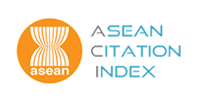A Study on Different Au Concentrations for Α-Fe2O3@Au Hybrid Structure Preparation and Characterization
DOI:
https://doi.org/10.58915/ijneam.v18iJune.2338Keywords:
Ferric oxide (Fe2O3), Au-Fe2O3 hybridstructure, Pulse laser deposition, Structural properties, Morphological properties, Optical propertiesAbstract
This research presents the effective synthesis of ferric oxide nanoparticles (Fe2O3) and α-Fe2O3 @Au hybrid structures in thin films at varying gold concentrations, utilizing the pulsed laser deposition (PLD) approach with a Nd:YAG laser. The creation of a nanohybrid was the outcome of depositing nano α-Fe2O3 with gold. The nanocomposite α-Fe2O3@Au, which has a hybrid structure, was the subject of characterization studies; XRD analysis confirmed the presence of polycrystalline nanoparticles with rhombohedral-centered hexagonal structures of Fe2O3, and the diffraction peaks for Au were indexed to the face-centered cubic phase of gold at orientation (64.5). The morphological properties were analyzed using Field Emission Scanning Electron Microscopy (FESEM), Atomic Force Microscopy (AFM), Energy-Dispersive X-ray Spectroscopy (EDX), as well as Ultraviolet-Visible (UV-Vis) analysis. According to the findings, the agglomerated nanoparticles of Fe2O3@Au have a spherical or semi-spherical shape and a tendency to form clumps. The hybrid structure of Fe2O3@Au also contains a higher concentration of agglomerated particles. The results indicated that particle sizes ranged from 166 to 505 nm, with an increase in gold content (Fe (III), O,79Au) correlating with a maximum particle size of 505 nm for pure α-Fe2O3. EDX analysis confirmed the presence of Fe and O components in the thin films. The optical analysis demonstrated that the samples possess an optical gap of around 2.6 eV, fluctuating with the substance's concentration variations.

















